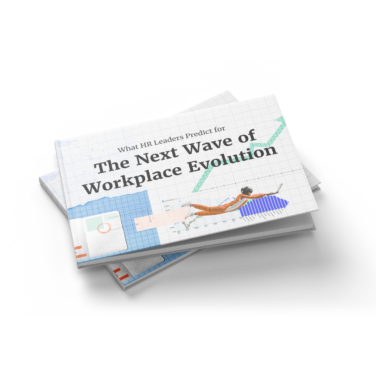Payroll documents might not be the most exciting part of running a business, but they’re absolutely essential.
They ensure employees get paid accurately, taxes are filed correctly, and businesses stay compliant with labor laws. From tax forms to pay stubs, these records help companies avoid costly errors and legal headaches.
As Andrew Lokenauth, Fractional CFO and financial advisor, puts it, “Documentation is everything—and I mean everything!”
Think of payroll document management as more than just a compliance task, but as a strategic foundation for accuracy, trust, and agility.
The better your payroll documentation practices, the more confidently you can scale, respond to audits, and support employees.
In this article, I’ll break down what payroll documents are, why they matter, common challenges businesses face, and methods and best practices for keeping everything organized.
What Are Payroll Documents?
Payroll documents are the behind-the-scenes paperwork that keeps employee paychecks accurate and businesses compliant.
Here’s a list of the payroll documents you’ll need:
- Employee Information: Name, address, SSN, role, employment status (hourly, salary), pay rate, and tax withholding information.
- Form W-4 (Employee’s Withholding Certificate): Completed by employees to determine federal income tax withholding amounts from their paychecks.
- Form I-9 (Employment Eligibility Verification): Verifies an employee’s legal eligibility to work in the U.S.; required at the time of hiring.
- Time Records: Time sheets or other records tracking hours worked, including overtime.
- Pay Stubs: Provide employees with a breakdown of their earnings, taxes withheld, and deductions each pay period.
- Payroll Register: A detailed internal report showing employee wages, tax withholdings, and net pay for a specific pay period.
- Form 941 (Quarterly Federal Tax Return): Reports income taxes, Social Security, and Medicare taxes withheld from employees, plus the employer’s share.
- Form 940 (Annual FUTA Tax Return): Reports and pays federal unemployment taxes once a year.
- Form W-2 (Wage and Tax Statement): Summarizes an employee’s earnings and tax withholdings for the year; provided to both employees and the SSA.
- Form W-3 (Transmittal of Wage and Tax Statements): Summarizes all W-2s submitted by the employer to the Social Security Administration.
- Form 1099-NEC: Reports non-employee compensation paid to independent contractors; must be issued to both the contractor and the IRS.
- Direct Deposit Authorization Form: Authorizes the employer to deposit wages directly into an employee’s bank account.
- Reimbursement Forms: Any expense reports for work travel, office supplies, etc.
- State and Local Tax Forms: Used to report state income tax withholdings and unemployment insurance, varying by jurisdiction.
- Payroll Process SOPs: It's not a tax form or employee record, but this is a critical internal control tool that guides how payroll is handled consistently and compliantly.
Keeping these organized ensures smooth payroll runs, happy employees, and no surprise visits from the IRS!
Why Are Payroll Documents Important?
A survey from Remote found that 40% of employees experienced payroll mistakes in the last year and 49% payroll teams spend 5+ hours per month fixing payroll errors.
Payroll documents are important because, when managed properly, they help ensure financial accuracy, legal compliance, and transparency.
Here are all the reasons they matter:
- Accurate paychecks: Ensures employees are paid correctly and on time, preventing errors in wages, tax deductions, and benefits.
- Legal compliance: They help companies comply with tax regulations, labor laws, and government reporting requirements.
- Tax reporting: Payroll documents support tax filings, helping businesses and employees avoid penalties or audits.
- Employee rights: They provide proof of earnings, deductions, and benefits, ensuring employees are fairly compensated.
- Business protection: Keeping accurate payroll records helps defend against legal disputes, audits, or employee claims.
- Budgeting and planning: Payroll data helps businesses manage cash flow, forecast expenses, and plan for growth.
Keeping payroll docs for tax reasons
You need to keep payroll records for tax reasons to ensure compliance with IRS regulations, accurately report employee wages, and avoid penalties.
These records help verify tax withholdings, Social Security and Medicare contributions, and unemployment taxes.
Keeping payroll documents also makes it easier to handle audits, file amended returns if necessary, and provide employees with accurate tax forms like W-2s and 1099s.
The IRS requires employers to retain payroll tax records for at least four years, while other laws may require longer retention periods.
Proper record-keeping protects your business from legal trouble and ensures smooth tax filings.
Keeping payroll docs for legal reasons
Different laws require payroll records to be kept for varying periods. Here are the key retention requirements:e kept for varying periods. Here are the key retention requirements:
Federal Laws
| Law/Regulation | Required Retention Period | What to Keep |
| Fair Labor Standards Act (FLSA) | At least 3 years | Employee hours worked, wages paid, overtime records |
| Internal Revenue Service (IRS) | At least 4 years | Payroll tax records (W-2, W-4, 941, 940), tax payments |
| Equal Employment Opportunity Commission (EEOC) | At least 3 years | Payroll records relevant to discrimination claims |
| Family and Medical Leave Act (FMLA) | At least 3 years | Leave requests, approvals, payroll records related to leave |
| Age Discrimination in Employment Act (ADEA) | At least 3 years | Payroll records of employees 40+ years old |
| Americans with Disabilities Act (ADA) | At least 3 years | Payroll records related to reasonable accommodations |
| OSHA (Occupational Safety & Health Act) | At least 5 years | Injury-related payroll records |
| Workers' Compensation Laws | At least 5–10 years (varies by state) | Payroll records related to injury claims |
State and local laws
- Some states require 6–7 years for payroll retention.
- Check specific state labor department requirements.
Legal disputes (best practice)
- If an employee files a lawsuit (e.g., wage dispute, discrimination claim), retain related payroll records for at least 7 years after resolution.
Other reasons to keep payroll docs
- Employee trust and transparency: Providing employees with easy access to pay stubs, tax forms, and benefits records fosters trust and reduces the administrative burden on HR.
- Historical data and workforce analytics: Payroll records offer valuable insights into salary trends, turnover, and labor costs, helping leadership make informed decisions and stay competitive.
- Compliance with government grants and contracts: Organized payroll documentation ensures compliance with funding requirements, supports smooth audits, and protects eligibility for government programs.
- Supporting mergers, acquisitions, and valuation: Clean, detailed payroll records demonstrate financial stability and workforce health, which are critical factors during investor due diligence or business transitions.
- Proving independent contractor vs. employee status: Accurate payroll documentation helps confirm worker classification, reducing the risk of IRS penalties or legal disputes over misclassification.
- Handling severance and retirement payouts: Up-to-date payroll records ensure accurate final payments and protect the company from claims or legal challenges during offboarding.
Where Should Payroll Documents Be Kept?
Payroll documents should be stored securely to ensure compliance, confidentiality, and easy access for payroll audits or reporting. Here’s where they should be kept:
1. Secure digital storage (recommended)
- Cloud-based payroll systems: Automate storage, ensure security, and allow easy retrieval.
- Encrypted digital files: If using internal storage, keep documents in encrypted drives or secure HR software.
For startups, using a payroll software solution for small businesses is likely the best option—it keeps records secure, minimizes manual handling, and ensures compliance.
2. Physical storage (if necessary)
- Locked filing cabinets: If storing paper records, use locked, fireproof cabinets in restricted areas.
- HR or accounting office: Limit access to only authorized personnel.
3. Compliance considerations
- Data retention laws: Keep payroll records for at least 3–7 years, depending on federal and state regulations.
- Restricted access: Only HR, payroll, and authorized financial staff should have access.
- Backup strategy: Maintain backups in secure locations (e.g., a secondary cloud service or external encrypted drive).
How To Keep Payroll Records Securely
Keeping payroll records secure is crucial to protecting employee data, preventing fraud, and staying compliant with labor laws.
From encryption to restricted access, here’s how to safeguard your payroll documents and avoid costly breaches.
1. Use a secure payroll management system
A payroll management system (PMS) automatically stores all payroll-related documents, including pay stubs, tax forms, timesheets, and payment records, in one secure location. This eliminates the need for physical paperwork and reduces the risk of misplaced or lost files.
Example: Instead of manually filing tax forms (W-2s, 941s), a PMS automatically generates and stores them for easy access.
Payroll systems use encryption, access controls, and automated backups to keep payroll data secure.
They also help businesses comply with IRS, FLSA, and GDPR regulations by ensuring records are retained for the required time and protected against unauthorized access.
Example: Cloud-based systems like Gusto, ADP or Paychex provide multi-factor authentication (MFA) and encryption, preventing unauthorized payroll data access.
Using a PMS helps businesses automate payroll processing, ensuring accuracy and compliance.
If paper records are necessary, they should be stored in locked, fireproof filing cabinets to protect them from theft, fire, or water damage.
Tip: For an additional level of security, if payroll or other sensitive data needs to be transferred outside of your organization, it may be appropriate to encrypt the files and/or apply password protection, with the password/key provided separately.
2. Ensure regular backups
Losing payroll records due to cyberattacks, system crashes, or even natural disasters can create serious problems for businesses.
To prevent data loss, employers should set up automatic backup so if a business experiences a ransomware attack, payroll data can be restored from a secure backup, preventing payroll disruptions.
Having multiple backup copies—such as storing payroll data on external hard drives, secured servers, or encrypted cloud platforms—adds an extra layer of protection.
Regularly testing these backups ensures that payroll data can be restored quickly if needed.
Businesses should also establish disaster recovery plans that outline how to recover lost payroll records efficiently.
Tip: Payroll systems ensure that payroll records are backed up regularly to cloud storage or external servers, preventing data loss from cyberattacks, system crashes, or human errors. Many systems also offer disaster recovery options for restoring lost data.
3. Provide training
In 2016, the payroll records of employees of social media site Snapchat were unwittingly sent to bad actors as the result of a phishing email.
For this reason, employers should also train people on data security best practices, such as avoiding email phishing scams or unauthorized access to payroll systems.
Regular security audits help identify vulnerabilities and strengthen data protection measures. Prioritizing employee privacy helps businesses build trust, comply with data protection laws, and prevent fraud.
4. Stay updated on laws and regulations
Payroll laws are constantly evolving, and non-compliance can lead to fines, audits, or employee disputes.
Businesses should stay informed about federal, state, and local payroll regulations, including minimum wage laws, overtime rules, and tax withholding requirements.
It’s also essential to track changes in employment tax rates, benefits regulations, and reporting deadlines.
Employers can stay compliant by working with an accountant, payroll service provider, or HR consultant to ensure payroll processes align with current laws.
Tip: Many payroll software solutions automatically update compliance rules, making it easier to manage legal changes. If you fall victim to a data breach, here’s a useful guide from Paycaptain taking you through what to do.
6 Payroll Documents Challenges And Best Practices
Managing payroll documents can get complex, especially as your team grows or regulations evolve.
Here are 6 common payroll document challenges organizations face and some best practices for overcoming them:
1. Incomplete or inaccurate records
It's easy for payroll records to become incomplete or outdated, especially when HR, managers, and payroll teams are siloed.
Missing tax forms, outdated pay rates, or incorrect classifications aren’t always caught until after payroll is run—or worse, during a payroll audit or employee dispute.
Best practices:
Build proactive checkpoints into your onboarding and payroll update processes, use integrated systems that automatically flag missing information, and create a habit of quarterly data validations, not just passive recordkeeping.
Also, make it a shared responsibility between HR and payroll, not just one team’s job.
2. Disorganized or scattered storage
When documents live in inboxes, spreadsheets, paper files, or multiple cloud drives, it’s nearly impossible to maintain control—especially when payroll needs to move fast. Audits, terminations, or wage claims become stressful scavenger hunts.
Best practices:
Invest in a document management system (or payroll platform) that enforces naming conventions, retention policies, and structured foldering.
Organize by pay period and employee, and align your folder structure with how you actually work (e.g., quarterly tax filing folders, offboarding documents, etc.). Think of this not just as storage—but as retrieval strategy.
3. Security and access risks
Payroll documents hold some of the most sensitive data in your organization—SSNs, bank info, salary history—yet access is often shared too broadly, or stored on personal devices or shared drives. Insider threats or accidental exposure are real risks.
Best practices:
Use tools that offer granular access controls, multi-factor authentication, and access logs. Limit full document access to a small circle of trusted users, and grant temporary or view-only access as needed. Train your team on what “sensitive” really means and embed security awareness into your payroll culture.
4. Lack of version control or change history
When an employee's pay rate changes, or a retroactive bonus is added, there's often no clear record of who approved it, when it happened, or why—leaving gaps in accountability. This becomes a serious issue during disputes, audits, or turnover.
Best practices:
Build a digital paper trail with version-controlled forms and logged approvals. Use tools that capture timestamps, user IDs, and rationale for payroll-impacting changes.
Bonus points for systems that notify relevant teams automatically when changes occur, rather than relying on word-of-mouth or email threads.
5. Missed retention or over-retention
Payroll teams either hold on to everything forever “just in case,” or delete too soon, not realizing certain documents have specific legal retention requirements. This creates compliance risks and clutters systems over time.
Best practices:
Maintain a document retention schedule that’s tailored to your state(s) and industry—some require 3 years, others 7+.
Automate archival, and periodically audit what’s being stored. Use retention policies not only to comply, but to create clarity and reduce noise in your systems.
6. Manual, error-prone workflows
When document handling involves emailing forms, printing approvals, or keying in values from PDFs, it’s a breeding ground for duplicate records, outdated data, and missed steps.
This often stems from legacy processes that were never revisited as the team or tools evolved.
Best practices:
Identify which steps in your payroll document workflow are still manual, and explore how to phase in automation—starting with areas of highest error or delay.
This might include electronic W-4 collection, automated reminders for expiring documents, or integrating your HRIS with payroll. Don’t aim for perfection at once—just start where it hurts the most.
Payroll File Checklist
1. Employee information
- Full Name
- Address & Contact Information
- Social Security Number (SSN) or Taxpayer ID
- Date of Birth
- Job Title & Department
- Hire Date & Termination Date (if applicable)
2. Payroll and compensation records
- Timecards / Hours Worked (for non-exempt employees)
- Salary or Hourly Wage Rate
- Overtime Pay Records
- Bonuses, Commissions, & Incentives
- Payroll Register / Pay Stubs
- Direct Deposit Authorization
3. Tax documents
- W-4 Forms (Employees) / W-9 Forms (Contractors)
- State & Local Tax Withholding Forms (if applicable)
- Payroll Tax Filings (944, 941, 940, W-2, W-3, 1099, etc.)
- Tax Payment Records (IRS, state, and local)
4. Deductions and benefits
- Health Insurance Premiums & Enrollment Forms
- Retirement Plan Contributions (401k, IRA, etc.)
- Garnishments & Wage Attachments (child support, court orders)
- Paid Time Off (PTO) & Sick Leave Records
5. Compliance and legal documents
- Employment Contracts & Offer Letters
- Non-Disclosure / Non-Compete Agreements (if applicable)
- Family and Medical Leave Act (FMLA) Requests & Approvals
- Workers' Compensation Claims & Reports
- Equal Employment Opportunity (EEO) Reports
- I-9 Forms & Work Authorization Documents
6. Payroll system & audit logs
- Payroll Processing Reports (from software or provider)
- Audit Logs (Changes to Payroll Records)
- Bank Statements for Payroll Accounts
- Year-End Payroll Summary Reports
Payroll Documents FAQs
How long should I keep payroll records?
The IRS requires payroll tax records to be kept for at least 4 years, while the Fair Labor Standards Act (FLSA) mandates keeping payroll records for at least 3 years. Some states and legal disputes may require retention of up to 7 years.
What payroll documents should I keep?
Key payroll records include pay stubs, tax forms (W-2, W-4, 1099), payroll tax filings (941, 940), time records, benefits deductions, and employment contracts.
Where should I store payroll records?
Payroll records should be stored securely in encrypted cloud-based payroll software or locked, fireproof filing cabinets if using physical copies. Access should be limited to authorized personnel.
What happens if I lose payroll records?
Losing payroll records can result in IRS penalties, legal disputes, and compliance issues. To prevent this, businesses should keep digital backups and use payroll systems with automatic record retention.
Do I need to keep payroll records for contractors (1099 workers)?
Yes. Businesses must retain 1099 forms, contractor payment records, and tax filings for at least 4 years to comply with IRS and labor laws.
Can payroll records be audited?
Yes. The IRS, Department of Labor (DOL), or state agencies may audit payroll records to ensure accurate tax reporting and compliance with wage laws. Keeping organized and complete records helps avoid penalties.
How can I simplify payroll record-keeping?
Using payroll software like Gusto, ADP, or Rippling automates record-keeping, ensures compliance, and reduces manual errors.
Subscribe To The People Managing People Newsletter
For further guidance on payroll and other talent management processes, subscribe to our weekly newsletter for HR and business leaders. You’ll receive all our latest content to help you grow in your career and make greater impact in your org.






